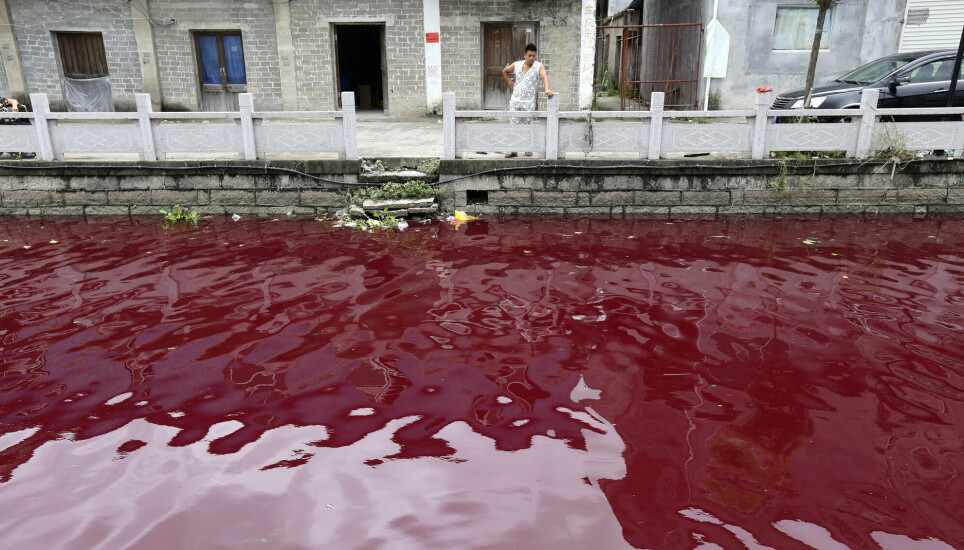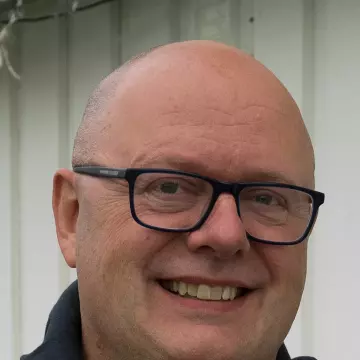
Your clothes cause water pollution — but now both the water and the pollutants can be reused
The clothing industry uses and pollutes large amounts of water. Now water from textile manufacturers will be treated, cleaned and reused.
The world doesn’t have enough fresh water. There’s barely enough water in many places across the globe for both drinking and watering food crops.
At the same time, industries consume large amounts of water. When this water is released to rivers and lakes, it’s generally not clean. The textiles that you walk around in, sleep in and wash are among the worst polluters. Twenty per cent of the water pollution from the world’s industries is due to textile production.
Reuse
“We want to reuse this water,” said Linmei Nie to sciencenorway.no. She is the CEO of CSDI Watertech. The Oslo-based foundation is studying alternatives to find a solution.
Nie and her colleagues are focused on handling stormwater runoff. Their partners in other countries are concentrating on reusing water that has already been used.
Most textile manufacturers do not purify their wastewater, or they purify it too poorly for it to be released into the environment, according to the Waste2fresh website, which is the project that CSDI Watertech works with.

Uses and pollutes
“The way the industry uses water is problematic, because there are chemicals in the water. It’s not just that the industry uses water, but also that they pollute it,” said Ingun Grimstad Klepp, a professor at Oslo Metropolitan University, OsloMet.
She says it is generally a good idea to purify industrial water so this resource can be reused a number of times.
“The textile industry uses water in its wet processes,” she says.
The industry calls it ‘dyeing and finishing’. These processes rely on chemicals, to make fabrics wind and waterproof, shrink-free or wrinkle-free, or to make the material less prone to odours and stains.
“There’s also a lot of washing involved in textile production,” says Klepp.
She points out that it is difficult to actually determine how environmentally harmful different textiles are. The industry is not in the least bit transparent, the OsloMet professor said.
Uses polluting chemicals
Waste2fresh is creating a system that collects used water, purifies it and uses it again.
“This project has allowed us to determine how to recycle the water by removing and upgrading elements such as dyes, organic substances, heavy metals and salts,” project manager Richard Burke said on Waste2fresh's website.
“The most common ways to remove dyes produce tons of toxic sludge. The sludge is dumped next to rivers and flows back into the water when it rains. We can recycle the water without producing sludge,” he said.
One Norwegian krone per pair of trousers
Burke runs Nanofique, a British company that will sell products to treat water used to dye textiles. He believes that it is possible to implement this approach all over the world without increasing the cost of a pair of trousers by more than one Norwegian krone (around 0,12 USD).
“We are very aware that our solution must be really cost-effective. Treating wastewater does not make the clothes better. If the treatment is too expensive, it may mean that the industry does not see the benefit in treating the water,” he said.
Burke believes that public regulations can play a role, but that they cannot solve the problem alone. It is possible, for example, to limit how much water each factory can discharge.
“What’s happening now is that there are practical solutions that we can use in addition to regulations,” says Burke.

Rain and flood
Linmei Nie, for her part, is following up Waste 2fresh by looking at how rainwater can be used as a resource, instead of a problem that leads to regular flooding. CSDI Watertech is now collaborating with Norwegian companies and universities to look at this issue.
“Climate change leads to extreme rainfall events with increased flood damage in cities, but also drought and water shortages in some periods. To reduce these negative effects, it’s important to introduce measures for surface water management locally and use rainwater and greywater for different purposes,” she says.
Greywater is wastewater that comes from the sink, shower, washing machine and dishwasher — essentially, household wastewater that does not come from the toilet.
———
Read the Norwegian version of this article at forskning.no
































